#davy mack's photography
Explore tagged Tumblr posts
Text

maxizpad: Great times.
📸 @davymacknyc
#derek klena#broadway#christy altomare#max von essen#caroline o'connor#shina ann morris#constantine germancos#anastasia broadway#anastasia cast#anastasia#davy mack photography#davy mack's photos#davymacknyc#social media#photos#instagram
34 notes
·
View notes
Text
A blind Vietnam vet, trained as a swordfighter, comes to America and helps to rescue the son of a fellow soldier. Credits: TheMovieDb. Film Cast: Nick Parker: Rutger Hauer Frank Devereaux: Terry O’Quinn Billy Devereaux: Brandon Call Cobb: Charles Cooper MacCready: Noble Willingham Annie Winchester: Lisa Blount Lynn Devereaux: Meg Foster The Assassin: Sho Kosugi Slag: Randall “Tex” Cobb Lyle Pike: Nick Cassavetes Tector Pike: Rick Overton Latin Girl: Julia González Gang Leader: Paul James Vasquez Crooked Miami Cop #1: Woody Watson Crooked Miami Cop #2: Alex Morris Bus Station Cop: Mark Fickert Popcorn: Weasel Forshaw Six Pack: Roy Morgan Snow: Tim Mateer Female Biker: C.K. McFarland Cornfield Killer #1: T.J. McFarland Cornfiled Killer #2: Blue Deckert Cornfield Killer #3: Glenn Lampert Cornfield Killer #4: Red Mitchell Rockwell Mom: Bonnie Suggs Rockwell Dad: Harold Suggs Freeway Lady #1: Barbara Gulling-Goff Freeway Lady #3: Holly Cross Vagley Freeway Lady #2: Dorothy Young Colleen: Sharon Shackelford Casino Bodyguard #1: Jay Pennison Casino Bodyguard #2: Masanori Toguchi Crooked Croupier: R. Nelson Brown Croupier #2: Lincoln Casey Jr. Croupier #3: Gene Skillen Big Mama: Debora Williams Casino Cowboy: Kyle Thatcher Casino Patron: Patricia Mathews Waiter in Elevator: Mitch Hrushowy Penthouse Guard #1: Ernest Mack Penthouse Guard #2: Linwood Walker Drug Dealer: Robert Prentiss Ski Lodge Killer #1: Jeffrey J. Dashnaw Ski Lodge Killer #2: Glenn R. Wilder Ski Lodge Killer #3: David R. Ellis Ski Lodge Killer #4: Michael Adams Ski Lodge Killer #5: Dave Bartholomew Ski Lodge Killer #6: Fred Lerner Ski Lodge Killer #7: Mike Shanks Ski Lodge Killer #8: Ray Colbert Film Crew: Director of Photography: Don Burgess Executive Producer: Robert W. Cort Producer: Daniel Grodnik Director: Phillip Noyce Producer: Tim Matheson Executive Producer: David Madden Associate Producer: Charles Robert Carner Production Design: Peter Murton Editor: David A. Simmons Original Music Composer: J. Peter Robinson Location Manager: Carole Fontana Unit Production Manager: Dennis Stuart Murphy Location Scout: Mike Harrowing Set Designer: Lauren E. Polizzi Title Designer: Michael Lodge Costume Design: Katherine Dover Production Coordinator: Jeffrey J. Kiehlbauch Casting Assistant: Louise Marrufo Production Coordinator: Gina Scheerer Casting: Junie Lowry-Johnson Casting Associate: William A. Johnson Art Direction: John Myhre Casting Assistant: Elisa Goodman Location Manager: Susan Elkins Script Supervisor: Helen Caldwell Set Decoration: Tom Talbert Second Unit Director: Dick Ziker Key Makeup Artist: Karoly Balazs Special Effects Makeup Artist: J.C. Matalon Assistant Hairstylist: Jan Sebastian Key Makeup Artist: Jeanne Van Phue Hairstylist: Cinzia Zanetti Production Manager: Leonard Bram Executive In Charge Of Production: Ted Zachary Additional Second Assistant Director: Sandy Collister Second Assistant Director: K.C. Colwell First Assistant Director: Tom Davies Second Assistant Director: Douglas Dean III Second Assistant Director: Thomas A. Irvine First Assistant Director: Donald P.H. Eaton Second Unit Director: Max Kleven Set Dresser: Joel Bestrop Art Direction: Michael Marcus Set Decoration: Nicholas T. Preovolos Sound Editor: Gregg Baxter Production Sound Mixer: Jacob Goldstein Assistant Sound Editor: David Hagberg Sound Re-Recording Mixer: Grover B. Helsley Sound Editor: Michael Hilkene Sound Mixer: Walter Hoylman Sound Editor: David M. Ice Sound Editor: Doug Jackson Special Sound Effects: Eric Lindemann Sound Re-Recording Mixer: William L. McCaughey Boom Operator: Prometheus Patient ADR Editor: Tally Paulos Foley Mixer: Troy Porter Sound Re-Recording Mixer: Richard D. Rogers Foley Artist: Joan Rowe Sound Editor: Christopher Sheldon Assistant Sound Editor: Thomas W. Small Foley Artist: Jerry Trent Special Effects Coordinator: Martin Bresin Special Effects Assistant: Steven C. Foster Special Effects Assistant: Marvin Gardner Special Effects Coordinator: Allen Hall Special Effects Supervisor: Mike Manzel Special Effects Assistant: Joe Montenegr...
0 notes
Text
KING OF THE ZOMBIES (1941) – Episode 174 – Decades Of Horror: The Classic Era
“The witchin’ hour. … Feedin’ time for the haints and I’m caught in the kitchen!” Dining with the haints? It’s a dream come true! Join this episode’s Grue-Crew – Daphne Monary-Ernsdorff, Doc Rotten, and Jeff Mohr along with guest host Scott Wells – as they discuss this Mantan Moreland vehicle, King of the Zombies (1941).
Decades of Horror: The Classic Era Episode 174 – King of the Zombies (1941)
Join the Crew on the Gruesome Magazine YouTube channel! Subscribe today! And click the alert to get notified of new content! https://youtube.com/gruesomemagazine
ANNOUNCEMENT Decades of Horror The Classic Era is partnering with THE CLASSIC SCI-FI MOVIE CHANNEL, THE CLASSIC HORROR MOVIE CHANNEL, and WICKED HORROR TV CHANNEL Which all now include video episodes of The Classic Era! Available on Roku, AppleTV, Amazon FireTV, AndroidTV, Online Website. Across All OTT platforms, as well as mobile, tablet, and desktop. https://classicscifichannel.com/; https://classichorrorchannel.com/; https://wickedhorrortv.com/
On a spooky island, three stranded travelers find an evil doctor working with foreign spies and in control of zombies.
Directed by: Jean Yarbrough
Writer: Edmond Kelso
Music by: Edward J. Kay (as Edward Kay) (musical score)
Cinematography by: Mack Stengler (director of photography)
Selected Cast:
Mantan Moreland as Jefferson ‘Jeff’ Jackson
Dick Purcell as James McCarthy
Joan Woodbury as Barbara Winslow
Henry Victor as Dr. Miklos Sangre
John Archer as Bill Summers
Patricia Stacey as Alyce Sangre
Guy Usher as Adm. Wainwright
Marguerite Whitten as Samantha
Leigh Whipper as Momba
Madame Sul-Te-Wan as Tahama
James Davis as Lazarus (as Jimmy Davis)
Laurence Criner as Dr. Couillie (as Lawrence Criner)
Combine the “Old Dark House” genre with a voodoo-zombie picture and you get King of the Zombies (1941). This light-hearted, slightly cringy but entertaining B-Movie feature is well worth a look back at its style, impact, and cast. The film may not be widely remembered but it handles the genre with ease, humor, and a smidge of tension. The Grue-Crew examines the film’s contributions and missteps. Let the shenanigans begin.
At the time of this writing, King of the Zombies is available for streaming from the Classic Horror Movie Channel, Amazon Prime, MGM+, Screambox, Kanopy, and Tubi.
Gruesome Magazine’s Decades of Horror: The Classic Era records a new episode every two weeks. Up next in their very flexible schedule, as chosen by Daphne is The Snake Girl and the Silver-Haired Witch (1968). A Daiei Studios production directed by Noriaki Yuasa, one of the creators of Gamera, this one was released along with Yokai Monsters: Spook Warfare. It’ll be fun!
Please let them know how they’re doing! They want to hear from you – the coolest, grooviest fans: leave them a message or leave a comment on the Gruesome Magazine YouTube channel, the site, or email the Decades of Horror: The Classic Era podcast hosts at [email protected]
To each of you from each of them, “Thank you so much for watching and listening!”
Check out this episode!
0 notes
Photo

davymacknyc: Ok, Ramin rocks but this is NOT practicing social distancing!
#lauren blackman#ramin karimloo#anastasia the musical#anastasia broadway#anastasia cast#anastasia musical#production: broadway#cast: broadway#davy mack#davy mack's photography#q
62 notes
·
View notes
Photo

davymacknyc: In the wings... #NYC #NewYork #Manhattan #Sony #a7rii #Disney #Anastasia #Broadway #Costume #DavyMackNYC #TonyAward #Backstage #Anastasiamusical #Theater #Vintage #Actor #JourneyToThePast #Russia #Retro #Photographer #Paris #France #StageDoor #ChristyAltomare
#christy altomare#davy mack#anastasia the musical#anastasia broadway#anastasia musical#photos#social media#instagram#anastasia#davy mack's photography
16 notes
·
View notes
Text


first glebga photo vs last || Anastasia Broadway
Happy trails to Max von Essen!
#i’m not crying you’re crying#glebga#glolga#anastasia broadway#max von essen#lyrica woodruff#anastasia musical#davy mack’s photography#musical theatre#broadway
107 notes
·
View notes
Photo

davymacknyc: On for Dmitry tonight, the awesome Kyle Brown... #NYC #NewYork#Manhattan #Sony #a7rii #a7r2#Anastasia #Broadway #Costume#DavyMackNYC #TonyAward #Backstage#Anastasiamusical #Theater #Vintage#Actor #JourneyToThePast #Retro#Photographer #Paris #France#StageDoor #Disney
#kyle brown#davy mack#anastasia the musical#anastasia broadway#anastasia musical#production: broadway#cast: broadway#social media#instagram#photos#photography: davy mack
15 notes
·
View notes
Text
instagram
Davy Mack's photography for the show never ceases to amaze me.
Alex looks so deranged.
#you better believe I made this my home screen#one of them anyway#davy mack#Beetlejuice#davymacknyc#Instagram#alex brightman#Betelgeuse
10 notes
·
View notes
Text
“You’re stuck on a island... on that island is a box... what’s in that box?” [an entire family]
okay shoot dang it. now i want a SHIELD Family Robinson storyline. Not like they’re stuck on the island persay. But like... they land Zephyr One on a plateau... and they just... decide to stay. The best part would be the lighting.
--
Hear me out... This may sound delusional, but it’s escapism from the horrors this show has caused me to experience.
Fitzsimmon could engineer housing plans for a cozy but rather impressive compound/base nicknamed The Treehouse with sustainable energy from the sun, the wind, the water... things that were used against them, now harnessed to help them... and maybe they even start working on a Wakanda-Styles cloaking device
and everyone would help build it up over a few years. Daisy’s powers are actually really helpful with this... There’d be private rooms built up in the trees and all securely connected to a central treetop lounge for game night and karaoke. and an underground weapons bunker built into a cliffside for storms or dangerous threats. Fitzsimmons definitely have a little bat-cave lab set up in a cavern hidden behind a beautiful energy-providing waterfall that empties into a lagoon.
They raise chickens and wild pigs and goats. There’s even a communal garden/greenhouse that Simmons takes pride in improving and renovating for maximum quality and efficiency. But it’s Mack who really enjoys tending the plants. Though they all take turns with chores which provide them with pleasant work to keep busy.
Daisy finds she likes to draw and paint. She and May also take up surfing in their spare time. Deke takes up playing guitar... I’ll let you decide if he can sing or it’s a big nNOO from the team whenever he starts. And once he gets used to all that water--and it does take him some time--Deke learns to swim in the shallows but especially enjoys boating trips whenever Coulson goes fishing. Coulson likes to write (memoirs disguised as sci-fi) and read (history books and comics) and go on walks with May on the beach (he starts a collection of rare seashells). May does a lot of yoga and wood carving, but always looks for ways to be helpful, including heading supply runs on the Quinjet. Mack takes up photography and Elena reads more. They like go for morning runs and challenge each other by rock climbing (either in a loop where she has arms, or in a loop where she has robot arms because that just seems so very Yo-Yo to me).
and Fitzsimmons. They breath. They heal. They stick their toes in the sand and let the ocean lap just at their feet, as if to taunt the ocean, saying “see you hold no power over us”. And they take Deke with them sometimes, and they build magnificent sandcastles because he never knew what it was like to play in the sand. They explore. and they study. they find ways of improving their island lifestyle, they build this life with Daisy’s help, fix broken parts with Mack, and they forgive. and they mend. When someone is sick they go to Simmons. When something breaks they ask Fitz. It feels good to simply help. They delight in discovering the wonders of their habitat including flora, fauna (yes, this absolutely means monkeys), oceanography, geology, astronomy. And monkeys. Fitz even tries train a pet monkey. It’s harder than he thought. Until Simmons steps in and helps. And they learn to dream again, learn to love again.
Over time, the island becomes a H.A.V.E.N. The Real T.A.H.I.T.I. They monitor the world for missions they need to take, but mostly the provide a safe place for burned agents to lay low and hide their families. This is their main mission. Davis and his family move there, and Piper moves in next door (after being vetted) with her mom and little brother. Huntingbird finds them and sets up their home there too. There’s a few others. Mike makes it his base and visits often and Ace grows up there with his aunt.. and with Aunt Daisy. Polly and Robin live there too, under Daisy’s and May’s watchful eyes. Daisy and Coulson are seen as leaders among the small, but growing, community.
Eventually families start forming. Fitzsimmons have their daughter. And Davis has a few children. And Huntingbird has at least one kid. Mack and Elena have twins. And Agent Shaw (there was an Agent Shaw in like 1x04 just FYI) has a few kids, his youngest son is, coincidentally, named Owen.
There are at least 10 kids now. Uncle Deke, Uncle Hunter, and Mr. Mack and Aunt Daisy are all great fun as babysitters, letting them eat junk food and watch movies and play video games.
Eventually a small, unconventional home school system forms... Mrs. Polly and Mrs. Davis teaches reading and writing and art and music, Coulson teaches them about history, Mr. FItz and Mrs. Jemma teach them about the scientific method. Mrs. Jemma and Mrs. Bobbi teach them basic principles of biology while Mr. Fitz teaches maths and physics, Mr. Fitz and Mr. Mack also show them how to build and repair things. Mrs. Elena teaches them a little Spanish, Mrs. Bobbi teaches them a little Russian. Aunt Daisy teaches them about computers and coding, Mrs. May and Mrs. Bobbi and Uncle Hunter take them camping sometimes and teach them survival skills. Uncle Hunter takes them out sailing with Mrs. Bobbi. Uncle Deke was banned from going with Hunter ever again after he and Hunter found out what an unsafe pair they make on a boat with a bunch of small kids influencing their behavior. They love to go on day trips on the Zephyr and visit places all around the world. Their kids learn so much hands on. But they try to give their kids as normal a life as they can.
and everyone is safe like 95% of the time.
18 notes
·
View notes
Photo








Anastasia Costume Appreciation 2/3
'Paris Ensemble’
- Photography by Davy Mack
221 notes
·
View notes
Photo


Davy Mack's photography of the Anastasia cast is beautiful and you gotta check it out.
120 notes
·
View notes
Text

davymacknyc: Happy Valentine’s Day, all! Derek and Christy from Anastasia
#NYC #NewYork #Manhattan #DavyMackNYC #Anastasia #Sony #a7r2 #Photographer #Theater #Vintage #TonyAward #Costume #StageDoor#AnastasiaMusical #ChristyAltomare #DerekKlena #JourneyToThePast
#derek klena#broadway#christy altomare#anastasia#anastasia cast#anastasia broadway#social media#instagram#photos#davy mack photography#davy mack's photos
27 notes
·
View notes
Photo
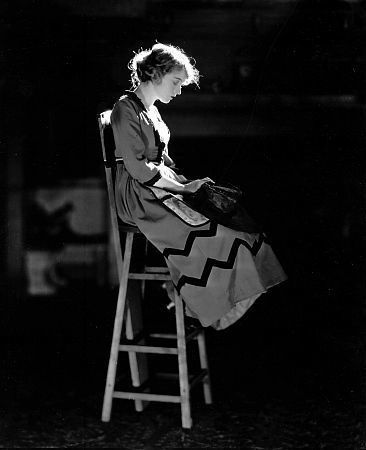
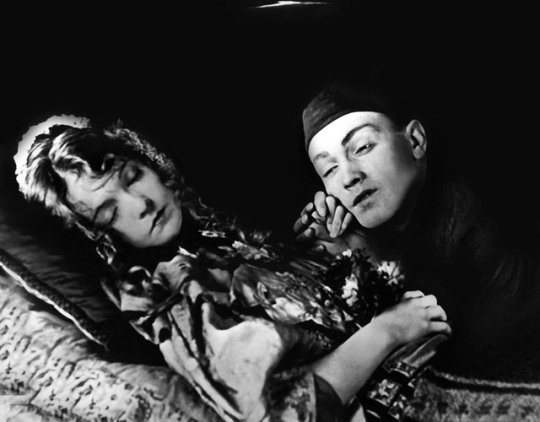

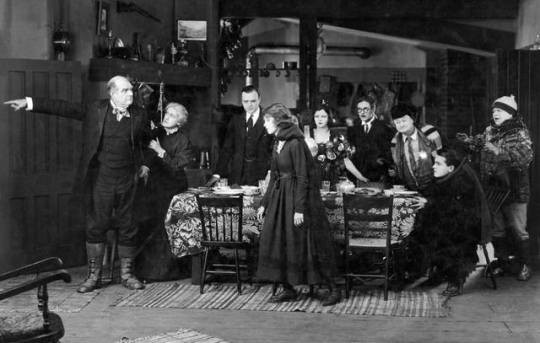

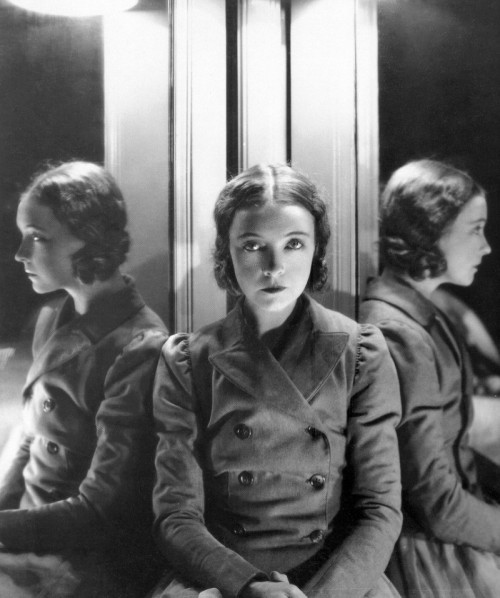
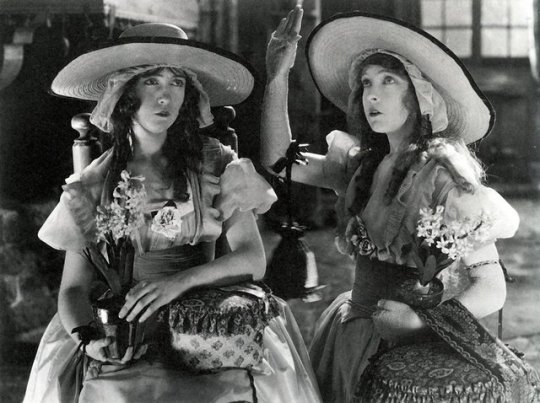
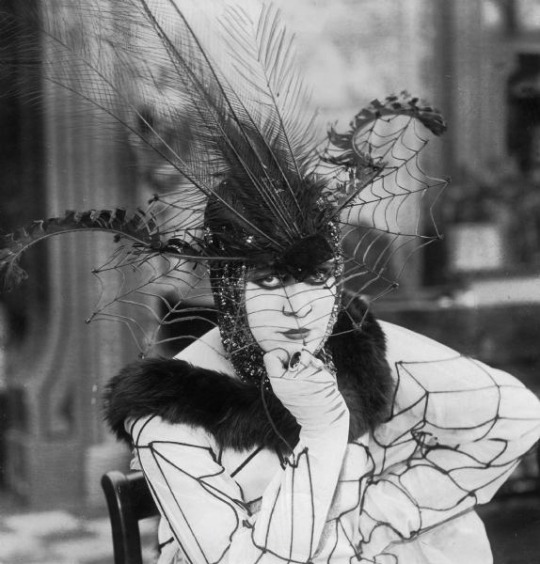
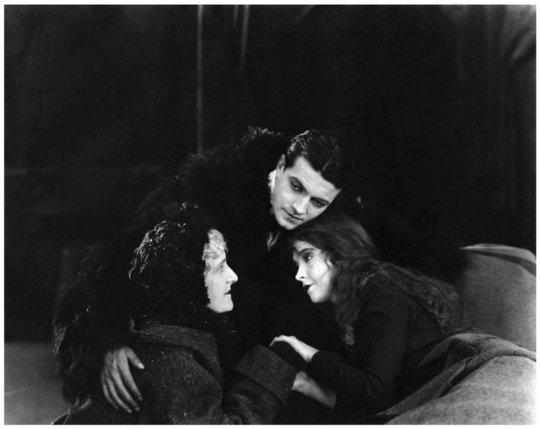
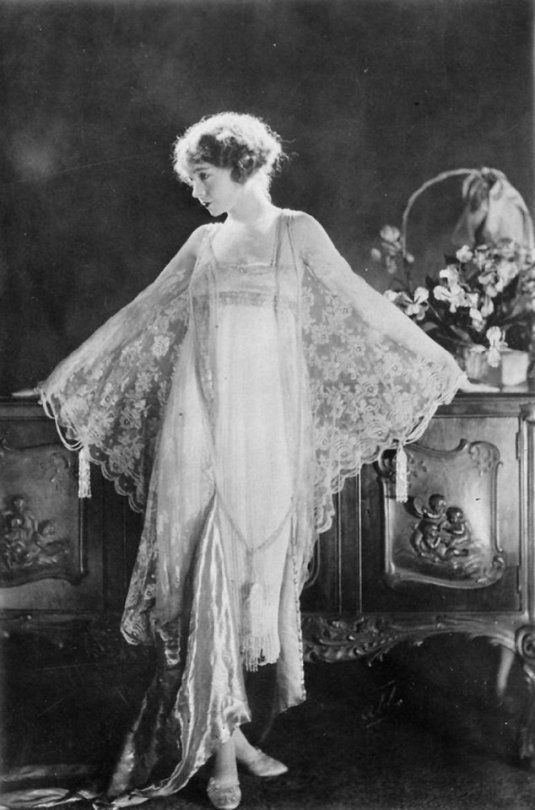
Silence A Silent-Screen Overview: Part 2.
Completing this journey across the period when the images were strong and meaningful enough to leave no space for the need of auditory input, the overview will start from 1916 and will continue up to 1929, although the last pieces that are mentioned regard 1936. Following the highlights of the years mentioned and gradually observing the replacement of the purity in emotion with the exaggeration in its portrayal, the swan song of the cinematographic naivety will be discreetly mentioned as well.
1916: D.W. Griffith’s second large scale production after “the Birth of a Nation”, is “Intolerance” with the out-of-space Lillian Gish and the rare persona of Douglas Fairbanks, which undoubtedly made 1916 an essential cinematographic year. What contributed to this, is the ongoing success of Mary Pickford, whose pictures were even distributed by the Artcraft Picture Corporation. Moreover, it is now that Charles Chaplin is considered the highest priced film star in the industry, after having signed with the Mutual Film Corporation. “Sherlock Holmes” with William Gillette is signed by Essanay this year, Norma Talmadge stars in “Going Straight” and Triangle releases the Fine art production of the Shakespearean “Macbeth”.
1917: Important contributions to the history of the silent screen were made in 1917, including the first all-colour feature film “A Tale of Two Nations” and the Williamson Brothers’ “The Submarine Eye” due to its underwater scenes. The charismatic director and storyteller Herbert Brenon made his exceptional “The Fall of the Romanoffs” this year and the Mack Sennett “Keystone Comedies” were released, including the “Bathing Beauties” as a means to cheer up the World War soldiers. Despite the cinematographic quality of the following films, what is also a contribution of this year, is the alluring costume creation, all evident on Theda Bara, throughout all her performances, as for instance in “Cleopatra”, “Camille”, “Du Barry”, “Cigarette”, as well as on Valeska Surratt and Virginia Pearson. Although the serial days were almost over, the “Seven Deadly Sins”, “Patria” with the astonishing Irene Castle and the “Mystery Ship” were created this year.
1918-1919: The war was gradually having greater influence on the film production. 1918 may be called the year of Propaganda, which is obvious through “Lafayette, We Come”, “To Hell with the Kaiser”, “The Beast of Berlin”, even Griffith’s “Hearts of the World”. What basically relates these two years when it comes to the practical matters of film production, is the combination of firstly the downturn that important colosseums of production were taking (like Vitagraph and Pathe) and secondly, the meaningful handling of Adolph Zukor. Zukor, whose philosophy was that important actors should reinforce through their fame the success of the film, did his best to keep in the game the corporations he participated into. During that, important movies were released like “Les Miserables” with William Farnum, “The Danger Game”, “Captain Kidd Junior”, “The Sheriff’s Son”. Moreover, essential Griffith creations were “The Girl Who Stayed at Home” and the unforgettable “Broken Blossoms” where Lillian Gish, an abused by her father daughter, is taken care by a Chinese immigrant, (the unbelievably expressive and eloquent Richard Barthelmess) something which ended up having even worse social effects on her. Many actors were given contracts from the newly established corporations, among them was the talented Nazimova (who stars in “The Red Latern”, “Out of the Fog” and “The Brat” this year), Gloria Swanson (staring in “For Better for Worse”, “Male and Female”) who were to considerably affect the world scenes.
1920-1921: The United Artists Corporation was now created, by the four most important names in the pictures: Mary Pickford, Douglas Fairbanks, D.W. Griffith and Charles Chaplin. Another highlight of the year, was the random discovery of Jackie Coogan by Chaplin, who played “The Kid” and became a star immediately. 1920 may be called the year of the great talent discoveries, because apart from Coogan, the actress Pola Negri and the director Ernst Lubitsch were bought into attention after Griffith’s “Way Down East” and “Passion”. Similarly, an outstanding talent discovery of the next year is that of Rudolph Valentino who gets the full attention of the audiences through his performance in “The Four Horsemen of Apocalypse”, “The Conquering Power” and “the Sheik”. Two radically different productions of 1921 that worth mentioning, are the ultra sensual “Camille” with Nazimova and Valentino and the purely naive “Coincidence” with June Walker and Robert Harron. Other than that, after the success of “Passion”, there were plenty German productions that managed to hit the box office, among them my personal favourites are “The Cabinet of Dr.Caligari” and “Deception”.
1922: If it can be stated that there has been a year where experiments took place before the silent screen, then 1922 is undoubtedly that. The charismatic Mexican dancer Ramon Samanyagos who changed his name to Ramon Navarro, performed outstandingly for “The Prisoner of Zenda” and Robert J. Flaherty’s “Nanook of the North” is categorised among the very first documentaries of all times. That indicates how even history can be narrated by the simplicity yet mastery of the bodily movement. Moreover, Nazimova’s “Salome” whose sets were based on the drawings of Beardsley can be evaluated as an artistic orgasm, although it was not a box-office success. Since theatricality was boosted even further through Salome, Marion Davies continued to create her extravagant elaborate costume pictures and D.W. Griffith did a remake of the “Two Orphans” as “Orphans of the Storm” which was even more expressive and complete than before, and where Lillian and Dorothy Gish’s stills can be easily mixed up with black and white paintings.
1923: Greta Gustafsson or Greta Garbo: The name that was to shake and reshape the film history, firstly appeared this year, and this is probably enough to mention. Her performance in “The Atonement of Gösta Berling” was followed the same year by “The Hunchback of Notre Dam”, where it is made clear that the weird make-ups and genres are what fit her fine. Other than that, the heartrending Pola Negri, after her feature in “Bella Donna” justifiably becomes the only honest rival of Gloria Swanson. Despite the wide film production of the year, what may count as an essential contribution to the film evolution, is Fritz Lang’s “Siegfried”, due to its flawless photography which although inspired and was referred to in movies some decades later, had a direct effect on Chaplin’s “A Woman of Paris”, in the same year.
1924-1925: The public demand for big pictures made only the large-scale efforts of these two years to be appreciated by the audience. This indicated that it was all about the survival of the “bigger”. On 1924 such syllogism is proven right through the success of Fairbanks’ “The Thief of Bagdad”, Pickford’s “Dorothy Vernon of Haddon Hall”, Davies’ “Yolanda” and “Janice Meredith”, Griffith’s “America” and First National’s “The Sea Hawk”. Similarly, on 1925 it was basically “The Phantom of the Opera” with the brilliant oddity of Lon Chaney, Chaplin’s “The Gold Rush”, “Stella Dallas” and the astonishing “Last Laugh” by F.W. Murnau which is considered as the most complete and perfect film ever made, as it didn't even have descriptive subtitles.
1926 and the gradual death of silence: The beginning of the end of the silent screen was signalled by the creation of the Vitaphone, bought by the Warner Brothers, to reproduce sound after being synchronised with the film projector. The first trial of the Vitaphone was through “Don Juan” with Barrymore, followed by the “Jazz Singer” with Al Jolson the year after. Apart from that, with the colour process called technicolour Fairbanks created his film “The Black Pirate”, slowly bringing about another indicator of the end of the silent screen as it was known. “Ben Hur” and “Variety” were the aesthetically highlights of this year, together with the sealed stardom of Gary Cooper and Greta Garbo.
1927-1929: During 1927 and probably due to the increasing technical support, the standards of success were reshaped. Yet, a reminder of the straightforward mastery of the silent screen is “It” with Clara Bow, when “It” became synonymous with sex appeal and for a short time the constructed needs for technical evolution, were forgotten. Step by step, the “talkies” came to replace the silent pieces: dialogues were more often added and musical backgrounds were more and more synchronised to the motion. “Abie’s Irish Rose” was a “part-talkie” movie, followed by “Our Modern Maidens”, “The Kiss”, even “Wild Orchids”. Silent screen actors started taking voice lessons and by the end of 1929 the majority of the theatres and production companies were “wired for sound”. The farewell to the art through which everything was fully expressed even without the help of words, were given by Charles Chaplin through his “City Lights” and “Modern Times”, as the last silent but dignified cry for the simplicity of communication.
This overview was not to glorify the characteristics of the film-period mentioned, as if those could apply to the needs of the present. Instead, by observing the gradual evolution of the cinematographic genres, the themes that were more common, and the standards that were set through the specific types of performance, it was made clear that, back then, when the technical means of impression-making were lacking, the strength that the actual feeling was having, stripped down to its simplest form and expressed by the abilities of the body, was what really mattered. It is probably a massive collection of films to watch, but in case any of the readers decides to give some a try, then the question that can be thought over is: If the technical means that are now used for the impression- and atmosphere making, affect the complexity of the feeling portrayed, what is sacrificed so that for that feeling to still seem the same?
By Marianna Serveta Photos taken from the British Film Institute Gallery, no rights infringement intended.
8 notes
·
View notes
Video
youtube
SHAFT New Line Cinema’s action comedy “Shaft” is the next chapter in the film franchise featuring the coolest private eye on any New York City block. Tim Story (the “Ride Along” and “Think Like a Man” franchises) directs this all-new take on a legend, starring Oscar nominee Samuel L. Jackson (“Pulp Fiction,” “Kong: Skull Island”), Jessie T. Usher (TV’s “Survivor’s Remorse,” “Almost Christmas”), Regina Hall (“Girls Trip,” “Barbershop: The Next Cut”), Alexandra Shipp (“Straight Outta Compton,” “X-Men: Apocalypse”), Matt Lauria (TV’s “Kingdom,” “Friday Night Lights”), Titus Welliver (“Argo,” TV’s “Bosch”), Cliff “Method Man” Smith (“Keanu,” “Train Wreck”), and Richard Roundtree, the original John Shaft. JJ, aka John Shaft Jr. (Usher), may be a cyber security expert with a degree from MIT, but to uncover the truth behind his best friend’s untimely death, he needs an education only his dad can provide. Absent throughout JJ’s youth, the legendary locked-and-loaded John Shaft (Jackson) agrees to help his progeny navigate Harlem’s heroin-infested underbelly. And while JJ’s own FBI analyst’s badge may clash with his dad’s trademark leather duster, there’s no denying family. Besides, Shaft’s got an agenda of his own, and a score to settle that’s professional and personal. The film is produced by John Davis (“Game Night,” “Joy”) under his Davis Entertainment banner. “Shaft” is written by Kenya Barris (“Girls Trip,” TV’s “Black-ish”) & Alex Barnow (TV’s “The Goldbergs”), based upon the character John Shaft from the novel by Ernest Tidyman. Serving as executive producers are Tim Story, Ira Napoliello, Kenya Barris, Marc S. Fischer, Richard Brener and Josh Mack. Story’s behind-the-scenes creative team included director of photography Larry Blanford (“Ride Along,” “Tag”), production designer Wynn Thomas (“Hidden Figures”), editor Peter S. Elliot (“Ride Along 2”), and costume designer Olivia Miles (“Ride Along 2”). The music is by Christopher Lennertz (“Nobody’s Fool,” “Pitch Perfect 3”), and Dave Jorden served as music supervisor. New Line Cinema presents a Davis Entertainment Production, a Tim Story Film, “Shaft” is set for release on June 14, 2019. It will be distributed in North America by Warner Bros. Pictures, and internationally by Netflix.
DOWNLOADhere
0 notes
Photo



davymacknyc: One year ago! The amazing Christy Altomare bringing down the house at the end of Act 1 of the last show of Anastasia. Christy held that last huge note FOREVER and the whole theater was on their feet before she finished.
.
davymacknyc: One year ago, The last scene of the last show of Anastasia
.
davymacknyc: One year ago, the curtain call for Anastasia’s last performance. An amazing cast and show
#christy altomare#cody simpson#constantine germanacos#davy mack#davy mack's photography#anastasia the musical#anastasia broadway#anastasia cast#anastasia musical#production: broadway#cast: broadway#q
69 notes
·
View notes
Photo

davymacknyc: Mirror mirror on the wall.... #NYC #NewYork #Manhattan #Sony#a7rii #a7r2 #Anastasia #Broadway#Costume #DavyMackNYC #TonyAward#Backstage #Anastasiamusical #Theater#Vintage #Actor #JourneyToThePast#Russia #Retro #FilmNoir #Photographer#Paris #France #StageDoor #Disney
#Max Von Essen#christy altomare#anastasia the musical#anastasia broadway#anastasia cast#anastasia musical#photos#social media#instagram#others#anastasia#davy mack#davy mack's photography
42 notes
·
View notes